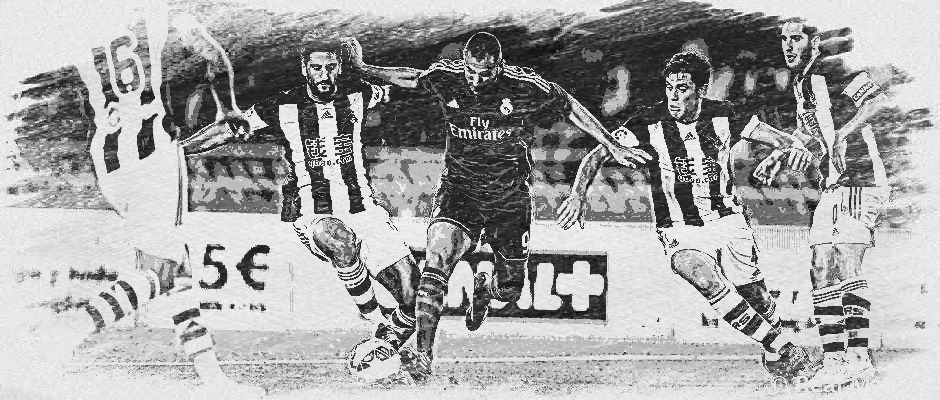
One-Club Man: Defence-First Football & Club DNA In FM24
The following is a guide written using examples from FM24 on a topic that I wrote about many times before. In other articles from FM21, FM22 and FM23 where I was trying to answer an age-old question – Can defensively-responsible, low-to-mid intensity football be successful in Football Manager? I said YES to that question many times before and given my limited experience (one season under the belt so far) with FM24, my answer remains unchanged. You definitely don’t need to roll a Gegenpress Meta Tactic (ahem highest defensive line with highest line of engagement and maximum pressing on attacking team mentality ahem) to be successful in FM. All you need is to commit to using logical, balanced Defence-First Football. And have a plan first.
1. Start With A Plan
One of the biggest mistakes you can make in Football Manager is to go into tactic creation without a preconceived tactical plan. This plan might not always be clear in the beginning. Or easy to form. But you will definitely need one in order to be successful in all tactical aspects of the game. And to come up with a logical plan you will have to ask yourself some questions.
What exactly am I trying to achieve with this tactical system?
How will the tactic emphasize the strengths of my players while minimizing their weaknesses?
How do I want my team to defend?
How will they attack?
Who will be my supporting, attacking and defending players? Who will score the goals?
Firstly, even if you are managing a world-class team, your players cannot do EVERYTHING. Even if they are the most well-rounded total footballers in the world, having them run around while trying to put 100% effort into both attack and defence is NOT ideal use of their skills or game time. Even in intense Geggenpress tactics players cannot attack and defend in equal measure and intensity. Something has to give. You can tell your players to be ultra-attacking and try to score loads and loads of goals. Or have them form a solid defence and just score enough to outscore the AI, whether it be by 1 or 2 goals. Because at the end of the day, that is all you need in the game of football to get those 3 valuable points.
You can certainly try to make an uber-aggressive attacking tactic, one with super high defensive lines and max pressing and try to cheat the game’s match engine. You will probably win more than lose, especially if you have very good players. You will probably win a trophy, or two. But I don’t think it’s a realistic or optimal way of playing FM. It’s certainly not how I gain satisfaction in FM24.
The football that I like my team to play is very balanced in both attack and defence. But if anything I want more focus on defence. Why? Well like I said before, if it only takes one goal to win, then why should my players expand their energy and risk injury trying to score more than one? It makes more sense to expand the rest of their effort on trying to prevent the other team from scoring. In my view that is a logical and balanced approach to football. Defence-First Football.
So there, that’s what I want to achieve with all of my tactics. Good solid defending. First and foremost. On to the next questions.
How do I want my players to defend? How do I improve the defensive side in my tactic?
There are a few things you can control which should help your team defend better in any formation (and even before you assign player roles).
First of all, use deeper player positioning to your advantage!
Position players on the field in a way to gain numerical advantage in areas where you want your players to defend the hardest and gain back the ball. So if you have strong, tall centrebacks who can jump and deal with crosses all day then why not funnel opponent’s attack outside, to the flanks? Let them exhaust themselves by running to the byline to launch low-chance crosses all day. This works even better when you have a numerical advantage in CBs as in 3-in-back formation (like Italian-inspired 3-4-2-1).
On the other hand, classic 4-4-2 (or its deeper DM variant) is a perfect formation for funneling the opposition and the ball to the wings where you can force them into running to the byline until they can waste their possession by crossing or get tackled by your fullback. It makes no sense to allow an opponent with a clear midfield tactical advantage to attack you through the midfield. 4-4-2 formation is inherently weaker in the midfield, especially against elite sides that like to press high such as the case with most modern top clubs using 4-3-3 formation. You will always be playing on your backfoot when you line up 2 midfielders against their 3. But how do you turn a weakness into an advantage? There is a very easy solution and all it involves is simple player positioning and a few team instructions.
I am a fan of using the defensive midfield strata when looking to make my tactic better defensively. It only makes sense to have your midfielders start deeper (where they are closer to, and can get support from your CBs) when you want them to defend better. Also, keep in mind that when you set up your formation in the Tactic Creator what you see on the screen is your out-of-possession defending shape. It reflects how the players actually line up when they defend, without the ball.
Therefore, when you want your players to defend and attack like a classic 4-4-2, you might actually want them to line up in 4-4-1-1 DM (or 4-2-2-1-1 DM Wide, if you really want to be pedantic) formation. This way you are making sure that your team operates in multiple layers for better ball control and can rely on adequate defensive support when the ball is lost. Your one attacking midfielder can also act as a deep supporting striker during attack, while being available in a deeper position when defending or moving the ball up (“comes deep to get the ball” trait helps a lot). At the same time, the two DMs can drop down to aid your CBs. And if you use a versatile role like Segundo Volante then you can still have your DM acting as a proper attacking CM (or even AM given the new positional play changes in FM24) when the ball is regained and you go on the offensive.
To summarize, if you think that: a) you will easily be outplayed (due to numerical disadvantage) down the middle, and b) have tall, physically and mentally strong CBs who have no problem dealing with crosses… then it makes sense to funnel the opponent to the wider areas when your team will have no disadvantage. Or might even have a slight advantage. Because on the flanks the defending team can use the sidelines and the byline as an extra defender. It’s a fact, flanks are easier to defend simply because space is limited and no matter how fast or technical the opponent is, they won’t be able to go outside the limits of the pitch and bypass your defender.
So two simple steps. Place midfielders in DM strata, then funnel (through Outside Trap instruction) opponents to the flanks where you can match (or even outnumber them, if opposition likes to use inverted wingbacks) opponent numerically. So far so good!
We have our “better defending” shape and basic defending plan. Now before we start selecting roles, it is a good idea to examine the player attributes. Specifically those attributes, which I believe are important to Defence-First Football.
Attributes For Better Defending (Or Improved Defence Starts With Inner Strength)
Mental attributes are absolutely key for Defence-First Football. Closely followed by physical attributes such as Stamina, Strength, and Jumping Reach (especially for centrebacks who you want to deal with crosses but having midfielders with good jumping is always preferred). Of course this is not to say that technical attributes such as First Touch, Passing and Technique are not important to defensive football. Quite the opposite. Teams such as Barcelona often play very solid defensively-responsible football because they possess players with high levels of technical skills. Such players might not be able to tackle very effectively or outmuscle their opponents but they will nevertheless keep the ball away from the opposition and thus reduce their chance to score. Dominating possession is a type of defending while pure possession tiki-taka football is one of the most defensive styles around.
Possession-focused football helps in defending by controlling the ball and space. Those are basic principles of both Total Football and Positional Play football. Have players in every area of the pitch at all times, when one leaves, another replaces him. Win back the ball as soon as you lose it. But that’s not what I am focusing on in this guide. Plenty has been written on that topic by others more qualified me. Even then I have covered quite a lot already on Total Football and Positional Play in my past articles. Some of them, like the one below you can still find here.
This guide is about defending on a budget. Sort of. Not that the tactical style that I am developing is only suitable for a relegation-threatened underdog. As you have probably guessed already I am using the example of Real Sociedad which is definitely a top mid-table club in Spain. Maybe not strong enough to properly challenge the two Madrid clubs and Barcelona for the title but good enough to win a continental football spot every season. La Real actually has enough technical players to attempt Possession-focused defensive style and I have tried that on many occasions with them in the past. Yet there is still a huge gap between them and a club like Man City or even Barcelona. After a few seasons you can definitely try to narrow that gap through smart transfers and youth intakes but it will remain an uphill struggle for quite some time to compete against elite teams like City on their own terms.
Much better to beat them on your own terms. And that is why I prefer to save my money and defend smarter. Exactly, SMARTER.
Mental attributes denote player’s footballing IQ and tactical awareness. And it is not as expensive to stock your team full of players with great mental attributes. Besides players with great Teamwork and Workrate will work much harder at following your tactical instructions. Less hair loss due to manager frustration.
Although you can always opt for a nice hat if the stress becomes too much to handle.
When you examine the profile of your typical player with defensive responsibilities, be it a centreback, inverted fullback (on defend duty) or a defensive midfielder, there will be a few important attributes shared across all roles. Interestingly enough, aside from the stan5dard ones like Positioning and Jumping Reach, majority will fall in the upper half of the mental attributes section. I will try to outline them in the order of importance.
Anticipation, Composure and Concentration, I deem to be essential attributes for any player who will be involved a lot in defensive situations (essentially your defensive midfielders and centrebacks).
Anticipation – is foremost an attribute that defines player’s football IQ. Wrongly, many FM players tend to assume it is more of an attacking attribute, like Off The Ball attribute. While Anticipation can be very useful to an attacker, it is a very general attribute that influences almost all player actions in both attack and defence. In fact, there is a good reason that almost every role in the game has Anticipation listed as either required or important attribute. Simply put, Anticipation reflects the player’s ability to predict and react to movements and other actions of both his teammates and opponents. Higher Anticipation will allow player to react faster to events. Anticipation works in tandem with either Off The Ball or Positioning depending on the situation. So for a defender, he could have the best Positioning in the world but if his Anticipation is bad, he simply won’t anticipate the movement of the opposition attacker accurately enough to get into a good defensive position.
Positioning – another key defensive attribute which all defensive-focused roles require, defensive wingers and liberos included. Positioning is the defensive equivalent of offensive Off-The-Ball. It reflects how well a player reads a defensive situation and positions himself so as to deal more effectively with an opposition attack. Positioning comes into play when your defenders are off the ball and the opponent is in possession. As mentioned above, Positioning and Anticipation work in tandem and should really be an ever-connected pair. Obviously, you should be much more wary of asking a player with good anticipation but bad positioning to defend. Yet one with great positioning but mediocre anticipation should also never be your 1st choice.
Concentration is my next essential Defence-First Football attribute. The game defines it as “the player’s mental focus and attention to detail on an event-by-event basis”. I see it as a mental equivalent of physical stamina attribute. Thus because mental attributes are so important to defending, it only makes sense that your defenders have the mental stamina = concentration in order to defend at the top of their abilities for as long as possible. Unlike attacking, defending is something that is always ongoing throughout the whole 90+ minutes of a match. Your team might have scored a vital goal against a tough opponent so then the next logical step is to defend even harder so as not to lose your lead. The moment you have a single goal lead is when defending becomes the team priority.
Essentially Concentration is a measure of how unaffected a player is by lost focus when making a decision. The player’s focus will gradually drain over the course of the match. And the more his focus decreases the more likely he is to make a bad decision. Higher concentration will reduce the rate at which focus falls.
Composure, my 3rd essential defending attribute, is similar to Concentration in how it affects decision-making. It defines a player’s steadiness of mind and ability to make smart decisions on and off the ball. Hence it is another attribute that is important in both attacking and defending situations. From its in-game description Composure might sound very similar to another mental attribute, Decisions. In my opinion Decision attribute is a good one to have BUT not as vital to defending as Composure is. Decision is a general measure of how well a player will evaluate the options that he is aware of and make the correct choice. Yet, a player’s decision-making will be limited by his Vision attribute. The choices are only as good the options that the player is aware of. If he does not see the best option then the choice he decides on might not be a very good one. Also Decision attributes is not contextual. Let me explain.
Composure on the other hand is more accurate in reflecting the kind of decision-making that happens all the time in the mind of a player engaged in defending. Defensive decision-making does not happen in a vacuum. It is done in the context of a very stressful, high-stakes situation. When you are defending against an opposing footballer who is actively trying to get past you and score. There is a lot of mental pressure that affects the decision-making process in such situations. Composure measures how unaffected a player is by this mental pressure while making a decision or performing an action on or off the ball. The higher the stakes, or closer the opponent is to the net you are trying to defend, the more interference this mental pressure will have on decision-making.
Mental pressure can arise from being close to opposition players (such as when trying to close down their star striker), or by the importance of the situation such as when the opponent has a clear goal-scoring opportunity. Thus when defending there is always mental pressure involved. Excessive mental pressure can cause a player to both make a bad decision and perform his chosen action poorly (poor tackle resulting in a red card). Higher Composure attribute reduces the effect of mental pressure upon the player’s Decision attribute. So that’s why I believe Composure is more important than Decision attribute for defensive situations.
Finally, there are a few complimentary mental attributes. They are not absolutely essential but are nevertheless very good to have as part of Defence-First Football DNA.
Players with high Teamwork attribute will just play more like you expect from your tactic. Hence less stress for the manager. According to the game, Teamwork reflects the player’s ability “to follow tactical instructions whilst working for and alongside his team-mates”. Very good to have for any football style really, but especially for Defence-First style that requires extra discipline and attentive commitment.
Workrate attribute, like Teamwork is bonus because it governs how hard a player “works” in both attacking and defensive situations. More specifically it is the player’s “willingness to work to his full capacity, going above and beyond the call of duty.” In the context of defending, it means that the player with high workrate who starts in a more advanced position will be more willing to drop deeper to close down opponents or try to regain the ball. Advanced midfielders and wingers (especially defensive wingers) will greatly benefit from high values in this attribute.
Determination is a self-explanatory attribute that is always good to have by all players and in all situations on the pitch and even off the pitch (will train better!). It is a no-brainer inclusion in my team DNA. Although I am willing to overlook relatively low determination in my youngsters, knowing that this attribute tends to naturally increase in players (ideally before mid-20s y.o) if given enough mentoring attention or just by being around a determined 1st Team Squad.
Finally moving to the physical attributes. There are three – two of which I think are very important to make your team better at defending and one attribute which is recommended but not essential. Not if you, like me, prefer to play with with more patient mid-to-low intensity style.
Strength and Jumping Reach will both help your players exert themselves physically over their opponents in all defensive situations, as well as the offensive ones. Therefore the two are always part of my Team DNA in every save and version of FM. Jumping is particularly important when a player competes with an opponent to get to an aerial ball such as a floated cross. Any tactic that is looking to set up a pressing trap outside and to invite crosses needs centrebacks with very good Jumping. While Strength is simply a measure of how well a player can exert his physical force upon an opposition player. Strength affects how likely a player is to succeed in a physical situation such as when shielding the ball from an opponent while standing or dribbling, when attempting to tackle, when marking an opposition player or when simply competing with an opponent to get to the ball.
No matter how technical your opponent is, they can still be outmuscled and bullied by a more physical defender. In any team sport, strength and size matter. Stamina on the other hand is important but not essential in my Defending DNA. Its importance varies depending on the style of football you are after. If you want your team to play a more proactive, aggressive style of defending (such as in Gegenpress) where your players will actively try to win the ball back in opponent’s half of the field then by all means Stamina will be key, along with Aggression and Bravery (I would also recommend those two any defence-minded player). In general, Stamina attribute reflects how well a player can retain condition while exerting effort during a match. Naturally, the higher a player’s condition is, the better he will perform any action. And the more effort a player puts in during a match the more his condition will deteriorate. That’s why more intense styles of football such as high-pressing Gegenpress or any high possession football require players with high levels of Stamina. For low-to-mid intensity midblock – not as much.
Tactics and Historical intermission to be continued in future articles.
And if you enjoyed this article, then please follow us @ Dictate The Game’s Facebook and Dictate The Game’s Twitter.
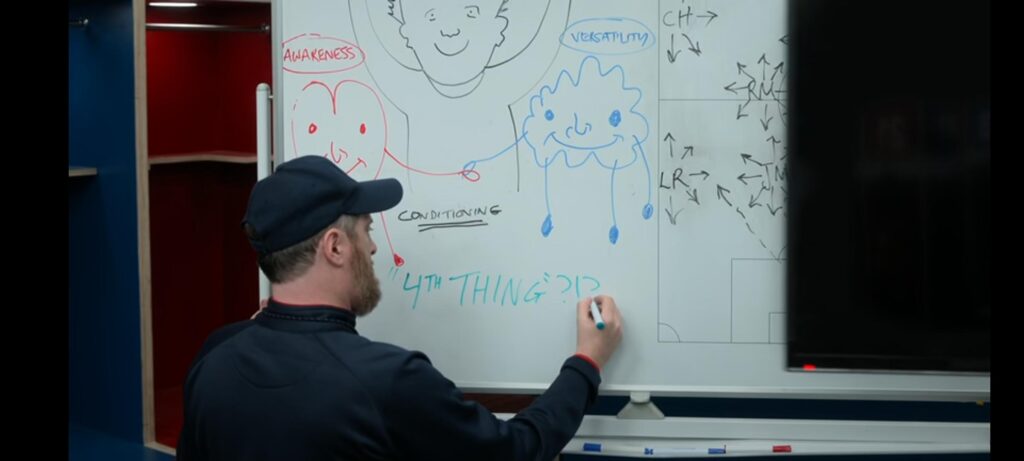
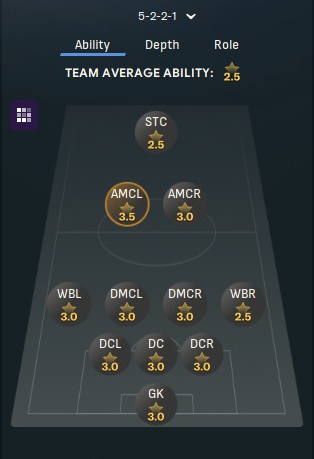
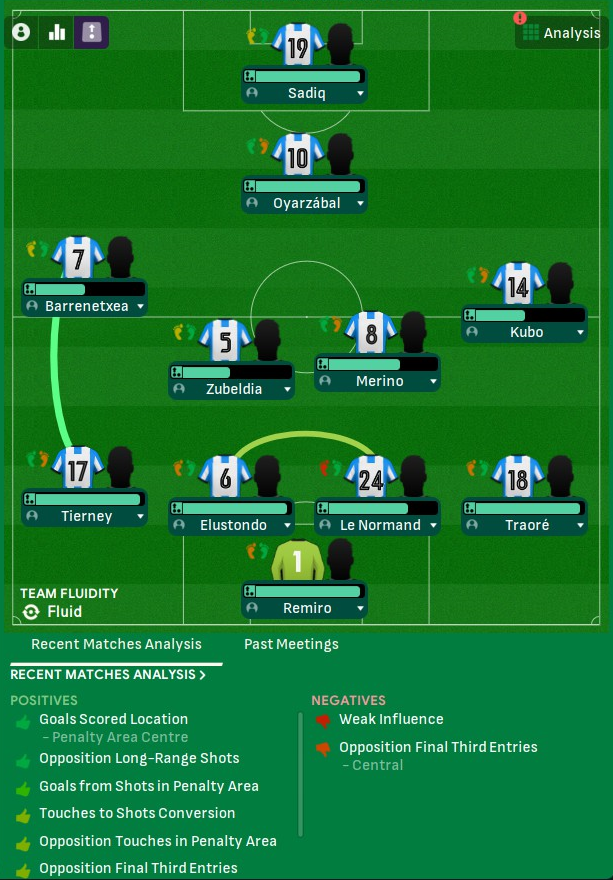
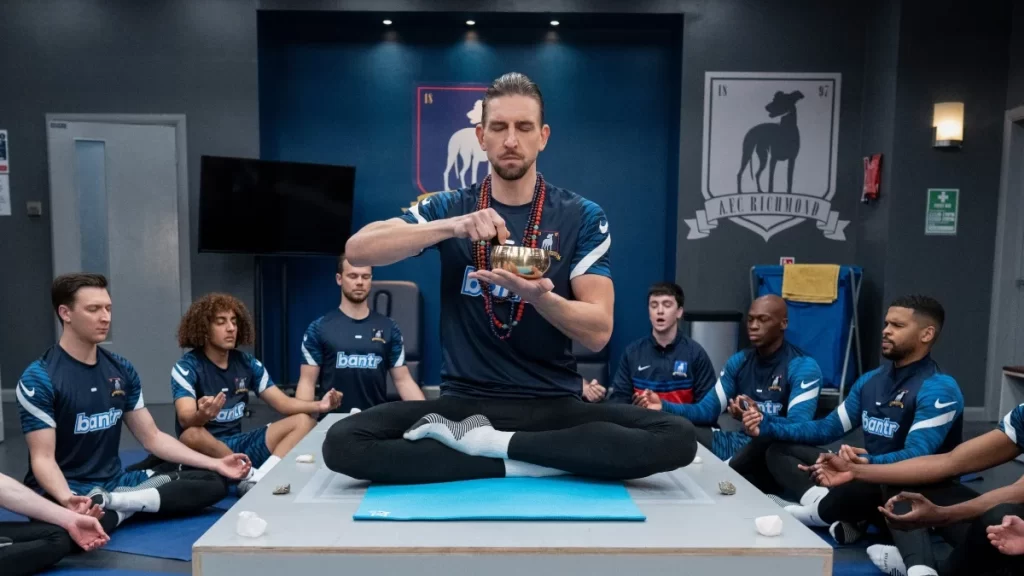

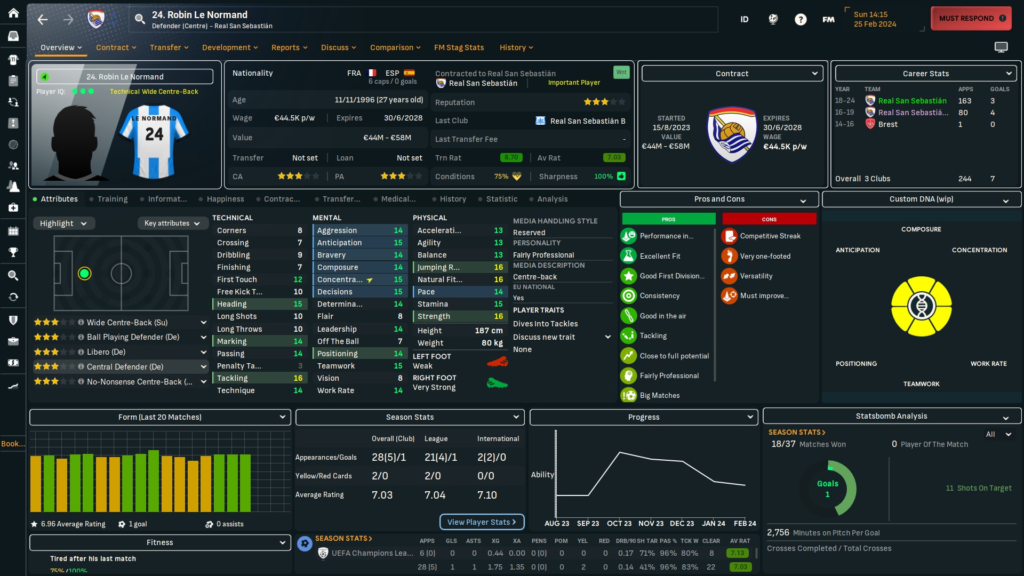
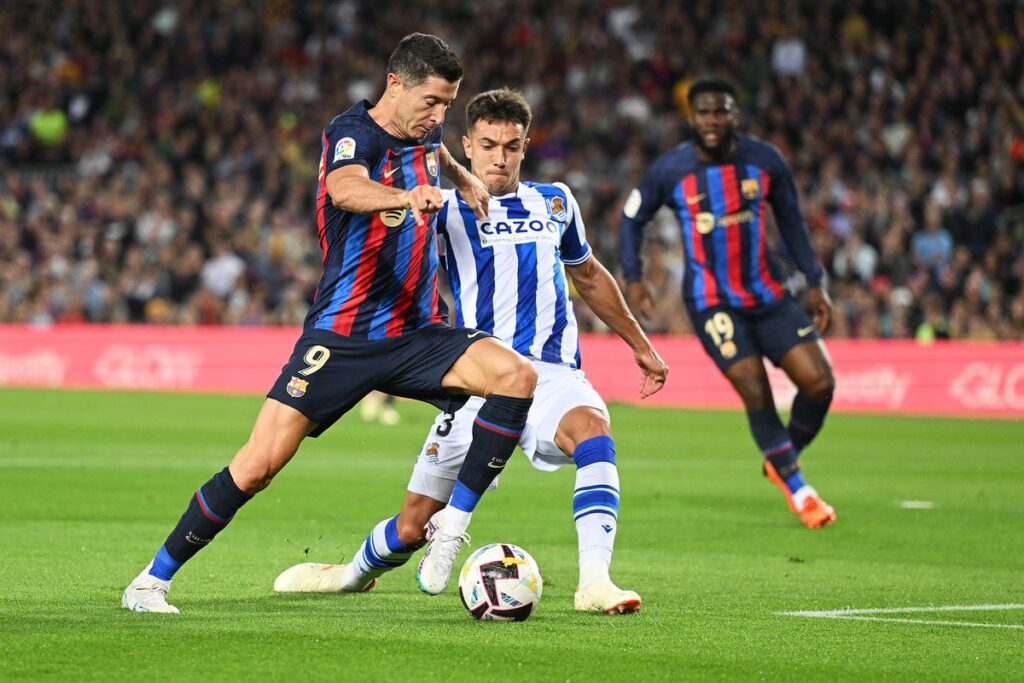
One thought on “One-Club Man: Defence-First Football & Club DNA In FM24”